Autoimmune diseases and allergies affect more than 100 million people in the U.S. These individuals suffer from the sometimes debilitating effects of their disorders. Given the disability and the treatment cost of these disorders, the promised benefits from extremely diluted homeopathic like low-dose immunotherapy looms large. Keep reading for more insights about this new approach to autoimmune conditions and allergies.
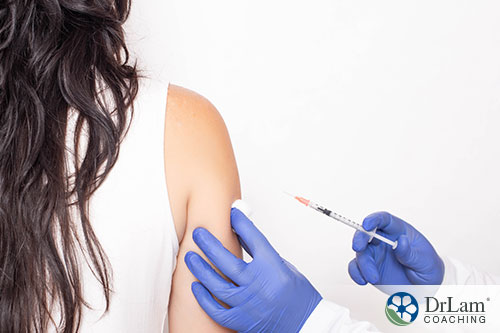 Low-dose immunotherapy (LDI) appears similar to homeopathy. However, it blends immunotherapy (as used in allergy injections) with some of the general principles of homeopathy. The mechanism of action in this approach is therefore similar to homeopathy, but with dramatically different results.
Low-dose immunotherapy (LDI) appears similar to homeopathy. However, it blends immunotherapy (as used in allergy injections) with some of the general principles of homeopathy. The mechanism of action in this approach is therefore similar to homeopathy, but with dramatically different results.
A major goal of low-dose immunotherapy involves encouraging your immune system to become more tolerant of antigens instead of provoking the immune system to act against the antigens . This is the opposite of conventional vaccine and antigen approaches. This approach works to reduce the likelihood of your immune system reacting against these antigens or immune triggers by exposing the body to extremely diluted antigens many times less potent than regular doses used in allergy and vaccine therapy.
Therefore, low-dose immunotherapy doesn't work the way a vaccine does. Vaccines used in modern medicine stimulate an immune response against an antigen by design. This low dose immunotherapy approach reduces the immune response toward an antigen. Vaccines often produce an immune response against antigens other than those targeted. This response can bring on undesired new allergies, inflammatory conditions, and even autoimmune conditions in the vaccine recipient as side effects.
The types of antigens targeted in LDI include a variety of bacteria, fungi, mold, protozoa, virus, and hormones. They can also be allergens derived from chemicals, foods, pollens, animals. Most people who have reactions to antigens or allergens try to avoid them the best they can, but this may involve significant restrictions on your lifestyle. The promise of low-dose immunotherapy removes these kinds of restrictions. LDI promises to help alleviate this problem.
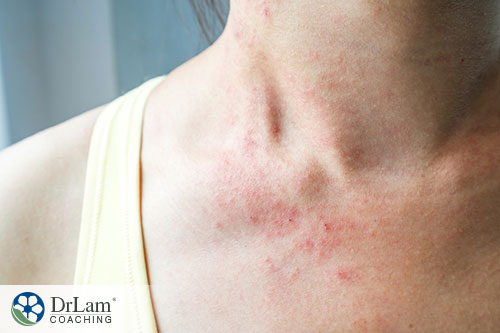 Estimates suggest that between 23.5 and 50 million people in the U.S. suffer from some type of autoimmune condition. Researchers also estimate that between 80 to 100 autoimmune conditions exist.
Estimates suggest that between 23.5 and 50 million people in the U.S. suffer from some type of autoimmune condition. Researchers also estimate that between 80 to 100 autoimmune conditions exist.
The prevalence of allergies among school-age children continues to climb as it now stands at 50 percent. When you also consider adults with allergies, the number of Americans with at least one allergy exceeds 50 million.
The most likely reason for the dramatic increase in children with allergies comes from overprotection. In decades past, children played outside. Their immune systems were exposed to pathogens and pollens. This then allowed their immune systems to become tolerant of these substances and develop antibodies to deal with them.
But, some parents today seem reluctant to let their children play outdoors. This stems from their desire to protect their children from exposure to the very substances that strengthen their immune systems. Children today spend more time with their electronic devices rather than playing outside as past generations did.
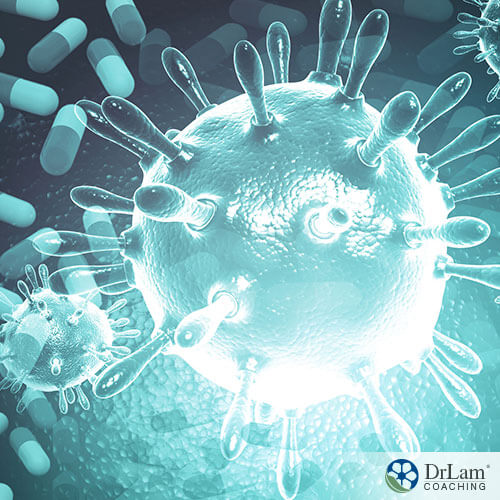 The significant increase in autoimmune conditions may be explained by the environment in which you live. Toxin accumulation in the environment may affect your immune system’s ability to discriminate between foreign substances and your own healthy cells. Your immune system becomes overwhelmed with the task of identifying and dealing with those substances that could harm you. Therefore, your immune system begins to attack all cells in an effort to deal with those that might harm you. Sometimes this effort is exaggerated, resulting in collateral damage to the body unexpectedly.
The significant increase in autoimmune conditions may be explained by the environment in which you live. Toxin accumulation in the environment may affect your immune system’s ability to discriminate between foreign substances and your own healthy cells. Your immune system becomes overwhelmed with the task of identifying and dealing with those substances that could harm you. Therefore, your immune system begins to attack all cells in an effort to deal with those that might harm you. Sometimes this effort is exaggerated, resulting in collateral damage to the body unexpectedly.
In such a case, your immune system attacks allergens and antigens when they are present foods, pollen, and bacteria. However, the hyperactive auto-immune response can also target your own healthy cells. This attack leads to a cross-reaction with one or more of your body systems. This cross-reaction may then result in an autoimmune condition such as Hashimoto’s thyroiditis, MS, and chronic fatigue.
The loss of immune tolerance may explain the significant increase in both allergic responses and autoimmune conditions. So, low-dose immunotherapy is vital to increase your immune tolerance.
Conventional thinking about allergies and autoimmune conditions focuses on an infection within the body that causes the symptoms. This requires interaction between an organism and its host, where the organism travels within the body to a place where it does not belong.
When a typical infection occurs, your immune system recognizes the foreign pathogens and immediately tries to rid your body of the organism invading a non-typical space. This type of inflammatory response serves to protect you from damage caused by the invading organism. Such common infections ( such as strep throat )are usually handled by a course of antibiotics if the body’s immune mechanism failed. Pathogens foreign to the body are thus eradicated and the body’s return to a state of homeostasis.
But some pathogens ( such as yeast ) have always been inhabitants within our body. They live in symbiosis with us. Some people carry these pathogens with no symptoms due to the continued exposure to them over time. The body may have developed tolerance or have the ability to keep their undesirable damage on a measured basis automatically.
It's still not clear why some pathogens lead to a more significant immune response. Neither is it apparent why some foods lead to a more significant allergic response.
There are changing viewpoints about infections being the basis of many health conditions. We now know, for example, that post infections can trigger undesirable auto-immune responses that can be debilitating as well. Such is the case with a condition called PANDAS. PANDAS is short for Pediatric Autoimmune Neuropsychiatric Disorders Associated with Streptococcal Infections. A child may be diagnosed with PANDAS when there is a sudden and dramatic development of Obsessive-compulsive disorder (OCD), tic disorder, or both following a streptococcal (strep) infection, such as strep throat or scarlet fever. Addition symptoms can include anxiety attacks, or show concerns about separating from parents or loved ones. Clearly, PANDAS is linked to a post-infectious event rather than the direct result of the infection. It is evident that the infectious organisms are capable to set off off a chain of exaggerated auto-immune type reactions that arise AFTER the acute infection is resolved. Development of these autoimmune conditions depends on the genetic basis for susceptibility and the degree of dysfunction of the immune system.
It, therefore, appears that genuine infections caused by pathogens may trigger autoimmune conditions.
In some cases, the bacteria associated with what traditionally has been called infections may actually be commensal bacteria. These bacteria live in your body with no symptoms until your immune system becomes weak and unable to keep them in check, or the body’s autoimmune response become triggered and produce an undesirable overactive response.
When these commensal bacteria begin producing symptoms, the result is not a true infection. Rather the symptoms are results of the immune response, leading to inflammatory response mediated by lymphocytes and cytokines.
Because of this, antibiotics fail to produce desired results (as in the case of Chronic Lyme disease or chronic systemic yeast infection ). It also explains the success of the low-dose immunotherapy approach in such cases, where the primary goal is to promote immune tolerance rather than immune provocation.
Many times, people who suffer from chronic and curable conditions fail to receive proper assessment. One reason for this comes from the multifactorial nature of such conditions. They become so complicated that conventional medical approaches fail to remediate them.
 These people may also suffer from the labels placed on them by healthcare professionals who simply don’t know what else to do. These labels then lead these sufferers to a state of marginalization. They may get referred to one specialist after another and get prescriptions for medications that do not help them.
These people may also suffer from the labels placed on them by healthcare professionals who simply don’t know what else to do. These labels then lead these sufferers to a state of marginalization. They may get referred to one specialist after another and get prescriptions for medications that do not help them.
Laboratory tests (when they are available) often only measure acute conditions. So, they may miss many indications of existing conditions where the agents became dormant. Also, the significance of many of the lab test results is set to specific benchmarks. Unfortunately, these significance levels only provide data tracking and do not always prove useful in assessing such conditions.
When chronic conditions become autoimmune ones, your immune system becomes hyperactive. It responds by over-producing cytokines, a type of signaling molecule. Most often in autoimmune conditions, these cytokines work to trigger inflammation. Inflammation accounts for the pain, fatigue, and swelling experienced with autoimmune conditions.
The hyperactivity of the immune system arises from the over-stimulation of the T-helper cells. These T-helper cells recognize foreign substances and cause the immune system to react. In the case of autoimmune conditions, the T-helper cells over-stimulate the immune system, leading to attack your healthy cells.
Low-dose immunotherapy works to bring these T-helper cells back to a normal level; this decreases the activity of your immune system.
This type of immunotherapy appears effective for a number of chronic illnesses that may lead to autoimmune conditions. These chronic conditions often lacked effective remediation options. Alternately, the remediation efforts meant using more and stronger medications with significant side effects.
A partial listing of chronic conditions for which immunotherapy proved effective includes:
The following examples are some of the conditions successfully remediated with low-dose immunotherapy:
People suffering from Chronic Lyme disease have many symptoms that differ with each individual. One may suffer from significant joint pain and numbness/tingling in their feet. Another may present with headaches, brain fog, or night sweats.
This confusing presentation of varying symptoms for different people makes an adequate assessment for Lyme disease difficult. Remediation efforts likewise become difficult. First efforts at dealing with Lyme disease often yield partial success. However, this condition can become chronic due to the stealthy nature of the spirochete behind it.
Conventional thinking labels this condition as an infection. The many co-infections that accompany Lyme tend to be viewed the same way.
But is this accurate?
One of the more interesting research findings shows that the ‘co-infections’ so often seen with Lyme disease originate from commensal organisms. So, these 'co-infections' are closer to allergic responses than true infections.
These results are also founded on previous findings that showed the bacteria responsible for acne actually live on everyone’s skin. Whether you get acne or not, depends not on the bacteria leading to an infection, but on whether or not your immune system responds to the bacteria. Therefore, acne should not be considered an infection only, but an immune response condition as well.
The same can hold for Chronic Lyme disease and its ‘co-infections’. Sensitive laboratory testing shows the bacteria responsible for them also living in healthy people with no symptoms. Thus, it appears that these conditions do not fit the classic criteria for actual infections. But, they more closely resemble immune-mediated responses possibly triggered by inflammation.
Clinical experience with Lyme disease also supports this stance. While initial rounds of antibiotics tend to control symptoms, as soon as the medication stops, the symptoms return. This does not fit the model of infections.
Typically, true infections, even serious ones, completely resolve with several weeks of intravenous antibiotics. Some Lyme sufferers take antibiotics for years without complete relief. Naturally, this sort of remediation also means serious side effects.
Clinical experience shows that using low-dose immunotherapy can result in long-term symptom relief and complete remediation in many people. But, an initial round of antibiotics is often necessary for immediate relief of symptoms from the triggering event of a tick bite.
You need to keep in mind the nature of the spirochete that causes Lyme disease. Because of its nature, it burrows deep within your tissue and achieves some protection from the effects of antibiotics. Once deep within tissue, the spirochete can lie dormant for a long time awaiting another trigger that allows it to become symptomatic again. It appears that the use of low-dose immunotherapy can stimulate your immune system to reach this deeply embedded spirochete and destroy it. As of this writing, research indicating such is not available.
Disorders of the gastrointestinal (GI) tract also result from multiple factors. This means that careful assessment and remediation efforts are required. Their complexity means that these disorders react to multiple triggers.
Remediation efforts using immunotherapy utilize many different antigens in treating GI disorders such as Crohn’s disease, irritable bowel disorder, and ulcerative colitis. Some of the antigens used are:
 The identification of autism and autism spectrum disorders has significantly increased. However, the appropriate remediation of this type of disorder did not increase as much.
The identification of autism and autism spectrum disorders has significantly increased. However, the appropriate remediation of this type of disorder did not increase as much.
Contrary to conventional thinking, some research and clinical practice indicate that autism stems from an inflammatory process originating from the immune system. From this perspective, autism then becomes an excellent example of a multifactorial immune response.
The target organ for this immune response is the brain. Due to the connection between a leaky gut and the brain, inflammation brought on by this immune response travels to the brain. There, a multitude of symptoms results.
Communication problems and learning difficulties then become obvious. A number of atypical behaviors tend to occur. Many more neurological issues result from this inflammation.
Clinical experience shows the success of low-dose immunotherapy in dealing with autism. Some of the more common antigens utilized include:

With autism, as with many chronic conditions, symptoms that result from different antigens appear very similar. This requires that the medical professional consider many different possibilities.
Different people with autism, or any chronic condition, present with different symptoms. Some have digestive issues, while others have skin conditions such as rashes. Some develop fevers, while others show psychological issues related to their condition.
In order to make a determination regarding the correct antigens to use, the medical professional must gather a significant amount of information. This requires thorough interviews of the patient and their family history. This collection of information eventually leads to the correct antigen.
So, clinical experience shows positive results with low-dose immunotherapy.
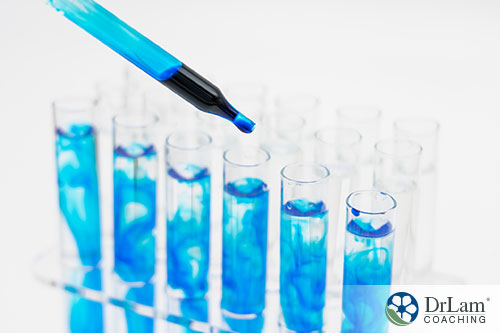 All of the previously named conditions respond well to low-dose immunotherapy. This is a modified form of immunotherapy that combines an extremely diluted mixture of allergens or antigens in an approach to desensitize the body, a method pioneered by Dr Shrader called LDA ( Low Dose Allergen) therapy for allergies. In LDA, a small dose of the enzyme beta-glucuronidase is added. This is done to increase the production of T-suppressor cells, also known as T-regulator or T-reg cells. These cells work to ‘turn off’ the helper cells that identify commensal bacteria and healthy cells as foreign invaders. Your immune system relies on these helper cells for the identification of cells it needs to eradicate.
All of the previously named conditions respond well to low-dose immunotherapy. This is a modified form of immunotherapy that combines an extremely diluted mixture of allergens or antigens in an approach to desensitize the body, a method pioneered by Dr Shrader called LDA ( Low Dose Allergen) therapy for allergies. In LDA, a small dose of the enzyme beta-glucuronidase is added. This is done to increase the production of T-suppressor cells, also known as T-regulator or T-reg cells. These cells work to ‘turn off’ the helper cells that identify commensal bacteria and healthy cells as foreign invaders. Your immune system relies on these helper cells for the identification of cells it needs to eradicate.
When your immune system becomes overactive in the face of an increasing load of pathogens and other substances, these helper cells also become hyperactive. They identify healthy cells and commensal bacteria as pathogens, leading your immune system to attack. This begins autoimmune conditions. LDI given in extremely low dose helps the body develop immune tolerance and coexist with the allergen or antigen symbiotically.
One of the reasons for the increased toxins load mentioned above, is a condition called ‘leaky gut’. This condition exists when the epithelial cells lining your gut develop loose junctions. Normally, the junctions between these cells stay tight, not allowing pathogens, undigested food particles, or other substances to cross from your gut into your body.
Under chronic stress, as seen in adrenal fatigue, the junctions between these epithelial cells loosen. Therefore, those substances normally kept in your gut are allowed access to your bloodstream. This triggers your immune system to try to rid your body of them. With more of these substances crossing into your bloodstream, your immune system becomes overwhelmed. Your immune system may start attacking your healthy cells and provide the ideal environment for autoimmune conditions to develop.
 Conventional medical interventions for autoimmune conditions hinge on modulating your immune system. This approach works in the sense that you no longer suffer from the symptoms of your autoimmune condition. Steroids are frequently used. However, it also sets you up for a potentially life-threatening condition due to your immune system no longer working. Using immunosuppressant medications leaves you at substantially higher risk of developing cancer or fatal infection. In fact, some of these medications lead to the development of other autoimmune conditions.
Conventional medical interventions for autoimmune conditions hinge on modulating your immune system. This approach works in the sense that you no longer suffer from the symptoms of your autoimmune condition. Steroids are frequently used. However, it also sets you up for a potentially life-threatening condition due to your immune system no longer working. Using immunosuppressant medications leaves you at substantially higher risk of developing cancer or fatal infection. In fact, some of these medications lead to the development of other autoimmune conditions.
With low-dose immunotherapy, your medical professional works to teach your immune system not to respond to those antigens that would trigger it. A central tenet of this form of immunotherapy re-establishes your immune system’s tolerance of these antigens and commensal bacteria.
Foods, some natural antigens like molds and pollens, chemicals, bacteria, viruses, fungi, or protozoa are potential antigens that respond well to low-dose immunotherapy. Recently, research and clinical experience discovered other antigens in your body such as hormones, essential nutrients, and minerals.
More internal antigens may develop due to toxins prevalent in the environment. This may also explain the increased prevalence of allergic responses and autoimmune conditions.
The key to success with low-dose immunotherapy lies in finding the correct dilution of antigen that leads to the immune system stopping its reaction to that antigen. So far, clinical experience are promising in dealing with some antigens and alleviating suffering in the associated autoimmune conditions.
The key to successful LDI rest with an experienced provider, patience, and accurate communication. Communication between the medical professional and the person suffering from the autoimmune condition must be clear and specific. Due to the specificity required in titrating doses, the sufferer must keep detailed records of changes in symptoms and clearly communicate the same to their medical professional. Low-dose immunotherapy holds the promise of replacing years of poor or no results with one safe and effective approach.
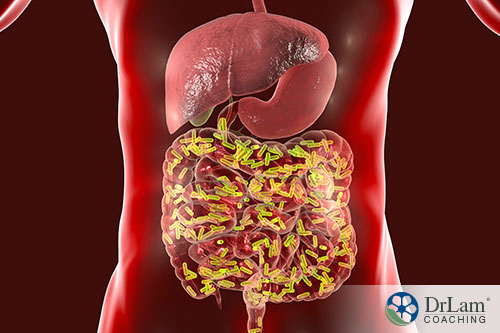 Some infections dealt with by antibiotics achieve initial relief by eliminating some of the bacteria causing the infection. However, not all of the invading bacteria are killed. Some (like the Lyme spirochete) can retreat deep within the tissue. There, the remaining bacteria trigger your immune system leading to a maladaptive inflammatory response. This makes you vulnerable to developing chronic conditions including autoimmune ones.
Some infections dealt with by antibiotics achieve initial relief by eliminating some of the bacteria causing the infection. However, not all of the invading bacteria are killed. Some (like the Lyme spirochete) can retreat deep within the tissue. There, the remaining bacteria trigger your immune system leading to a maladaptive inflammatory response. This makes you vulnerable to developing chronic conditions including autoimmune ones.
Even if the bacteria remaining die off, your immune system continues to overreact and attack healthy cells. This becomes the target of low-dose immunotherapy: your own immune system. It works to reprogram your immune system not to respond to the presence of the antigen(s) used.
Once this biological reprogramming takes place, your immune system becomes the protective system that saves your body from true infectious substances that would harm it. Your immune system begins to recognize and tolerate those typical substances in your environment and in your body as normal.
This process restores balance in your immune system without interfering with its normal defensive functions.
As the name implies, this form of immunotherapy utilizes diluted amounts of antigens. Because of this dilution, the administration of a dose does not directly affect your symptoms. In the case of external allergens such as food, animals, chemicals and environmental toxins, you must challenge yourself with exposure to the allergens within a set time after the first dose under supervision. In the case of LDI using pathogenic antigens, the change in symptoms signals the effectiveness of the treatment.
Initially, you will take in the antigen/allergens sublingually in the lower end of the dose range deemed suitable by your practitioner. The dose-response could be no change, positive or negative.
The difficulty with immunotherapy lies with your healthcare professional’s ability to estimate how long it will take for this response. Starting with stronger doses or progressing more rapidly through the titration of doses will shorten the time required for a response to occur. However, this leaves you at greater risk for a flare of symptoms. This means you may experience a worsening of the relevant symptoms for a period of time. How long this worsening lasts can’t be predicted. Its length depends on the strength of your dose.
The lower the dose ( higher dilution), on the other hand, avoid flares, but will result in slower progress. Your healthcare professional will make the best determination after assessing your health condition and sensitivity level. This determination comes from clinical experience.
Typically, dose dilutions are measured ‘1C’ at a time. A ‘C’ comprises a dilution step of 100:1. Using this dilution rule, a 9C is one hundred times more diluted than an 8C.
Possibly, you can proceed step-wise in 0.5C increments. This comprises a 10:1 step in dilution. Usually, this small step only comes when your healthcare professional thinks you’re getting close to your ideal dose. If you get a partial response with a close dose, you may resort to using this small step-wise dose to obtain your ideal dose.
The possibility of moving 2C or even 3C at a time also exists. This comes when you start at a conservative point and want to cover more dosing ‘ground’ quickly to get to a point where a flare becomes more likely.
Your risk of experiencing a flare may be greatest with your first dose. After that, you gain some control over the speed of progression of your doses versus the risk of flares.
Allow 6-12 weeks of titrating along with close reporting to arrive at the ideal titration. Fine-tuning is an ongoing process once the target dose is arrived at and symptoms relieve is evident. Even under the best clinical hands, some trial and error is required as everybody is different. Occasional “flares” are unavoidable and is part of the journey. Do not be discouraged. The more sensitive or weaker the body, the slower the process. Those with AFS will also need to understand that as AFS recovers, the body’s basic terrain and functional state will change accordingly. Proper LDI dosage will also likely change. Do not be frustrated. Learn throughout the process to listen to the whispers of the body and communicate well with your provider. That is the key to success.
LDI is relatively new. The best comparison is LDA. In over 55 years of use of LDA by multiple clinicians, not one validated report of anaphylactic shock or any life-threatening response is on record according to LDI pioneer Dr Ty Vincent. Because of the significant dilution of the antigen and allergens in LDI, this kind of response is unlikely to occur. Only independent exposure to the allergen itself poses the threat of this kind of reaction.
Some reports of very bad responses to immunotherapy do occur. However, when those same people who report these kinds of responses receive placebo doses, they report the same responses. Apparently, some people whose severe physical conditions remediated with low-dose immunotherapy also have significant anxiety regarding their issues. This anxiety and fear make them prone to what they perceive as negative responses to any intervention.
Now we turn to study how LDI can be used in AFS setting.
Adrenal Fatigue Syndrome (AFS) occurs when your adrenal glands have dysregulated regulation of adrenal hormones including cortisol, the body’s anti-stress hormone. It is a condition that leads to subtle but serious physical issues over a period of time, the most common symptom being fatigue, insomnia, low blood pressure, feeling of low blood sugar, reduced libido, anxiety, central weight gain, and low exercise capacity. A laboratory test is usually normal. Sufferers in advanced stages can be incapacitated.
The NEM Stress Response also helps your body deal with stress and its effects. It’s an automated response. Six circuits (each comprised of three organs or systems) are contained within this stress response mechanism. The six circuits inter-react when stress occurs due to the overlapping of the organs and systems in each. With continuing and chronic stress, one or more of these circuits may become dysfunctional. At that point, more symptoms develop. The circuit that will benefit most to low-dose immunotherapy interventions is the Inflammation Circuit.
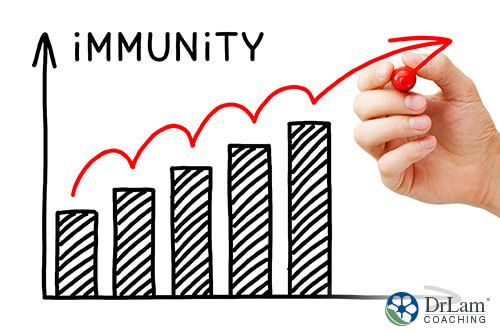 Runaway immune response in the dysfunctional Inflammation Circuit fits this model of chronic immune response vs. infection very well. Many autoimmune conditions find their origins in this overactive immune system and the way it develops.
Runaway immune response in the dysfunctional Inflammation Circuit fits this model of chronic immune response vs. infection very well. Many autoimmune conditions find their origins in this overactive immune system and the way it develops.
Problems tend to arise in this circuit at the point when inflammation becomes rampant and unchecked. The Inflammation Circuit aims to protect your body from invading pathogens whether these pathogens originate from outside your body or internally.
Inflammation occurs naturally in your immune system’s response to these pathogens. Typically, once the pathogens are removed from your body, the inflammatory response returns to a normal level. However, there are certain conditions in which this normal response spirals out of control. The result is chronic inflammation that can spread throughout your body.
Included in the Inflammation Circuit are the microbiome, the gut, and the immune system. These systems and organs work together with the rest of your body to fight whatever foreign ‘invaders’ might threaten you. They also try to keep your normal body processes functioning well.
Introducing low-dose immunotherapy into a body ravaged by the effects of a dysfunctional Inflammation Circuit and AFS may result in some unwanted effects.
Someone weakened by AFS and a dysfunctional Inflammation Circuit requires the medical professional using low-dose immunotherapy to be familiar with AFS. If not, the beginning dose levels in immunotherapy could trigger adrenal crashes by becoming another stressor for the body.
Persons suffering from AFS and the resulting autoimmune condition may seek quick relief by starting with doses that are too strong. The likelihood of flashes increases when initial doses are too high.
If this occurs, yet another stressor hits the body. This places more burden on the already exhausted adrenal glands, resulting in a crash. The savvy healthcare professional will help the patient understand this possibility.
The length of time required for low-dose immunotherapy to work falls in line with the length of time required for recovery efforts to have a positive impact on AFS. Once again, a healthcare professional familiar with AFS and low-dose immunotherapy can help the patient to understand the necessity of the length of time that's required.
A benefit of this intervention, in the case of a person with AFS, is the low dose of antigen applied in each treatment. Such a low dose isn't likely to trigger an immune response in that individual. Extremely low doses at the offset are often a requirement to not trigger such a response in a sensitive and weakened individual.
Persons with AFS may be more anxious at the likelihood of serious side effects with the application of immunotherapy. Those in advanced stages of AFS may have significant anxiety related to their health and any interventions.
Clear communication between healthcare professionals and the person undergoing this intervention must occur. This communication should include information about managing their anxiety about the effects of this intervention. A great deal of commitment is required on the part of the person choosing this immunotherapy intervention.
Potential interactions between other AFS interventions and low-dose immunotherapy remain unknown as of this writing. The fragile nature of the person with AFS may increase this potential.
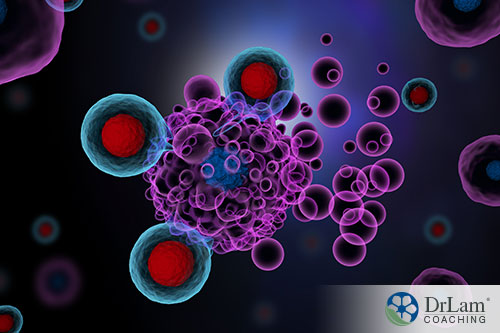 The potential for a great amount of good arising from low-dose immunotherapy is also possible for AFS sufferers. The goal of low-dose immunotherapy of decreasing the response of the immune system to antigens should also benefit persons with AFS.
The potential for a great amount of good arising from low-dose immunotherapy is also possible for AFS sufferers. The goal of low-dose immunotherapy of decreasing the response of the immune system to antigens should also benefit persons with AFS.
With AFS, your immune system can become hyperactive and results in exaggerated autoimmune conditions. Training it not to respond in a hyperactive manner can only bring widespread benefits. Thus, low-dose immunotherapy potentially has significant positive results.
Lowering the activity of your immune system will also decrease the stress you experience. Any decrease in your overall stress level also improves your potential for recovery from the effects of AFS.
Stopping the ravages of autoimmune conditions through low-dose immunotherapy also reduces your stress levels. This also improves the success of your recovery from AFS.
The severe loss of function and quality of life arising from autoimmune and allergic conditions signal their growing importance. Low-dose immunotherapy proves effective in remediating these conditions with few or no side effects. However, it is important to consider the time and communication commitments that are necessary to ensure that this type of intervention is effective. In the case of AFS patients, low-dose immunotherapy should only be done under the guidance of a medical professional who is not only an expert in the intervention but also AFS. The long-term benefits of low-dose immunotherapy for persons with and without AFS are great and merit further consideration.
To learn more about autoimmune and allergic conditions and how to remediate them, please visit the resources on our website.
Low-dose immunotherapy introduces diluted doses of antigens produced by your body in response to autoimmune or allergic conditions. Over a period of time, this essentially trains your immune system not to respond to much to these antigens. However, this procedure requires a commitment of your time and good communication.
